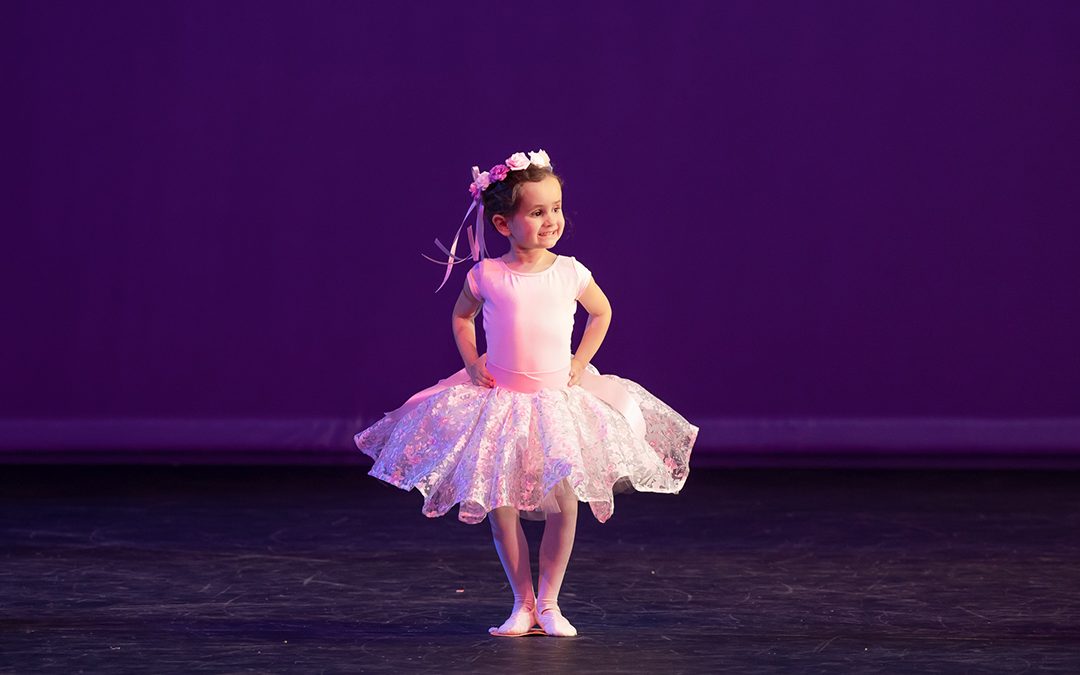Creative Ballet is a pre-ballet class for young students, typically between ages 3-6. This young, early introduction to ballet has several amazing benefits not only for the future development of young dancers, but academic, physical, and emotional development as well.
8 Top Benefits of Creative Ballet
As parents, we are under a lot of pressure to help develop our children’s skills, self-confidence, and interests—and sometimes it is surprising how early this begins! How can you be confident you are enrolling your child in the right activity and the right program?
No parent can see the future—and if you have older children, you know that interests ebb and flow and that what fascinates your child today may bore them to (literal) tears next week. Instead of trying to predict what activity your child will love int the long-term, it can be beneficial to find an activity with benefits that exceed the activity itself.
We’ve found that creative ballet, the early ballet classes taken as an early, age-appropriate introduction to ballet technique for young students, provides just this mix of benefits. Below, we share some of the top benefits our students experience from creative ballet classes.
1. Develop Confidence
One of the first things you’ll notice as you see your child progress in creative ballet is their burgeoning sense of self-confidence. Your little dancer, who may have been afraid to twirl when others were watching, will develop a glowing confidence as they’re introduced to more opportunities to dance with other children. They’ll learn to trust themselves and their ability to dance, as well as learning that it’s safe to express their passion for something—like ballet—in front of other people. The result is a more confident child with the mindset and skillset to continue growing self-confidence in the future.
2. Teamwork
Although ballet is often overlooked as a team sport, the reality is that all dancers have to work together to make choreography work. A child doing “their own thing” can disrupt the class or even a performance. Instead, students must learn to practice together, watch for each other on stage and in the studio, and to dance as a unit instead of an individual. For many young children, creative ballet is one of their first experiences putting teamwork into action.
3. Listen to Teacher
For our youngest creative ballet students, creative ballet classes are some of their first experiences listening to a teacher—or doing so without a parent by their side as in parent-child classes. Having the ability to listen to and follow teachers’ instructions has obvious benefits in educational applications, but it is also a beneficial skill for listening to coaches, team captains, parents (woohoo), or even future employers. The idea is that there is someone who knows something more than your child—and that if they listen, they can increase their personal knowledge and skills.
If you’re used to toddler power struggles, you know how this position can sometimes be misinterpreted by young children. In creative ballet, the group environment, novel studio atmosphere, and a genuine desire to learn to dance like the teacher and other students (we see this in almost every child with very little exception) encourages them to set aside the instinct to power struggle and to instead enjoy listening and learning.
4. Strength, Balance & Grace
Another reason parents choose to enroll their children in creative ballet at a young age is to help teach them balance and grace. Many sports teach strength, coordination, and balance, but ballet adds a level of grace that can be difficult to match in other settings. Children grow quickly and can often feel awkward and uncomfortable in their lengthening bodies. Ballet helps them learn to move more easily and gracefully, which can be beneficial for other sports as well for self-confidence.
5. Growth Mindset
Ballet teaches the all-important growth-mindset. Instead of thinking “I can’t do _______,” students learn to formulate the thoughts, “I’m practicing to learn ______,” and “if I practice, I can become great at ______.” Students in our Creative Ballet program are taught a variety of ballet techniques that are all age appropriate. At this young age, students are less likely to have the thought that they can’t do something, and Central Utah Ballet embraces that, extending their skills in a thoughtful and gentle way that helps reinforce that they can do anything with practice and patience. Students will see their skills progress—and parents will too.
6. Foundational Ballet Skills
Finally, creative ballet is not just a thoughtless activity designed to keep young children busy, it genuinely teaches important foundational ballet skills. Learning these skills early—and correctly—prevents young students from developing bad ballet habits that later have to be undone if they decide to pursue ballet further. More importantly, creative ballet provides students with a foundation upon which future skills can be built.
Final Thoughts
Creative ballet is fun and engaging while providing a wide range of benefits to students. To learn more about Central Utah Ballet’s Creative Ballet program or to explore our class schedule, click the button below.

